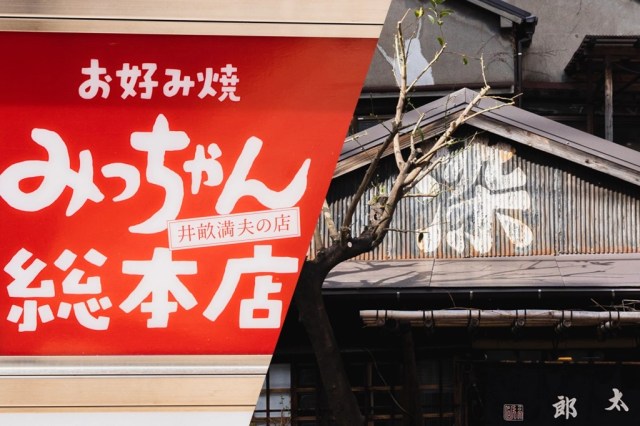
A delicious battle of regional styles results in one full stomach.
When it comes to okonomiyaki (sometimes described as “savory pancakes”), you’ll most likely find it in one of two styles: Osaka or Hiroshima. While most of the ingredients are the same, in the Osaka style they’re all mixed together before cooking, while in Hiroshima the ingredients are cooked separately in layers then stacked on top of each other. Hiroshima-style okonomiyaki also almost always contains an added layer of yakisoba noodles, whereas Osaka-style does not.
It might seem like a small difference, but asking whether someone likes Osaka-style or Hiroshima-style okonomiyaki can be like asking if someone likes Pepsi or Coca-Cola. Most people are OK with either one, but some diehard fans only have love for one and not the other.
Enter our Japanese-language reporter Tasuku Egawa, who isn’t an okonomiyaki hardliner either way, and, quite unusually for someone living in Japan, hadn’t eaten okonomiyaki since he was in junior high (and it was a frozen one, to boot). But since he had a trip to Hiroshima coming up, Tasuku found himself thinking about the two types of okonomiyaki. After doing some checking around, he found that the oldest currently operating Osaka-style okonomiyaki restaurant is actually located in Tokyo’s Asakusa neighborhood. He also learned that a chain called Micchan, which started in Hiroshima in 1950, claims to be the originator of Hiroshima-style okonomiyaki.
As you can probably guess from the title, Tasuku decided to try out these two restaurants and see how they compare, starting with Micchan’s flagship restaurant in Hiroshima City.
▼ First sign that it’s good: there was a line, even before the place opened for the day.
▼ The inside was just as buzzing.
When he finally got inside, it was absolutely packed, looking even more so due to the plastic screens placed between seats to prevent the spread of the coronavirus. While most Osaka-style restaurants let you cook your own okonomiyaki on a grill built into the table, in Hiroshima it’s always prepared by the chef. Tasuku even asked the family at the table next to him for recommendations, finding out they were born and bred in Hiroshima.
▼ Who better to ask for recommendations than a regular?
Along with the restaurant’s specialty okonomiyaki (1,400 yen [US$11]), they recommended he get a side dish called koune that “everyone in Hiroshima eats” to hold him over until the okonomiyaki came out.
▼ Apparently it involves meat.
Koune turned out to be beef shoulder mixed with veggies. Think of it as Hiroshima’s soul food. It was fatty, lightly seasoned, and chewy, making it the perfect pair to the beer he ordered.
▼ And here it is–the main course okonomiyaki.
After 15 minutes of munching, his okonomiyaki finally came, with layers of cabbage, bean sprouts, and pork, a generous helping of yakisoba noodles, and a thin covering of fried egg atop everything.
At the bottom was a thin crepe. Tasuku was surprised by the lack of batter, but he figured it was so they could make more room for the yakisoba noodles. The thin layers were just enough to keep moisture inside so that the noodles in the center were nice and chewy, while the outer layer got satisfyingly crispy.
The sauce can make or break a good okonomiyaki. Micchan uses a sweet okonomiyaki sauce to pair with the savoriness of the fillings. Tasuku also noticed a pitcher of extra sauce on the table, as apparently a lot Hiroshima residents like to heap it on generously.
▼ The sauce can be used for other menu items, too!
He also ordered a side dish of eggs, meat, and yakisoba noodles mixed together. It was pretty much the same as the okonomiyaki minus the batter. Delicious.
▼ Here’s another closeup of the okonomiyaki.
Overall, Tasuku thought this restaurant’s defining features were its careful selection of ingredients and the contrast between the crispness of the crepe and the fluffy okonomiyaki interior. It definitely stood out from the okonomiyaki he remembered eating as a kid, so he enjoyed the new experience.
▼ Then he teleported back to Tokyo.
Next up was Japan’s longest-running okonomiyaki restaurant, Sometaro, in Asakusa, which was opened in 1937 or 1938 (when you’ve been in business this long, apparently it’s hard to keep track). This is the kind of joint where the staff give you the ingredients you order and you make the okonomiyaki yourself. The owners don’t allow photographs of the interior, but Tasuku could take some pictures of his food.
▼ The ingredients, the bowl, and the general vibe gave him an at-home feeling.
Similarly to when he ate in Hiroshima, he got Sometaro’s basic house specialty, which is just pork, egg, and cabbage (there were also other menu options like beef and shrimp). He got his ingredients in a bowl with a spoon, almost like he was about to eat cereal.
▼ If you’re not experienced at making okonomiyaki, notes will help. Basically, it’s stir well, put oil on the teppan grill, then add your okonomiyaki batter and cook each side for 5 minutes.
▼ Let’s get cooking, Tasuku!
Okonomiyaki can get pretty sticky and cakey on the grill, so Tasuku spread a generous amount of oil. Better safe than sorry! In this case, sorry would mean a slightly more empty stomach.
▼ Then he arranged his batter in a pancake shape.
▼ After five minutes, he flipped it over. If it looks toasty brown like this, that’s a good sign.
While it’s convenient to visit Hiroshima-style places like Micchan that make everything for you, there are also a lot of people that enjoy being able to make it themselves. You can add the typical toppings like sauce, seaweed flakes, mayonnaise, and bonito flakes to your liking.
▼ A prime example of slathering on all the sauce you want.
Time for the taste test! Tasuku took a bite and noticed the distinct crunch of the cabbage right away. Where Micchan’s okonomiyaki’s insides were soft and fluffy, Sometaro’s were crunchy. The sauce Sometaro uses was also more on the salty side than the sweet side, so that worked with the crispy texture made for a hearty meal.
▼ He got more of a mouthfeel of the meat in this one, too.
So who won: the originators of okonomiyaki, or the longest-running shop? In Tasuku’s opinion, they both win. Each excelled at something different–one being sweet and one being salty–and the amount of batter used was different. All of these elements made for two almost completely different dishes.
The vibes in the places were for two different crowds, too, it seems. If you want to have a fun and relaxed group dinner, a place like Micchan is the place to go. But if you just want a quick and satisfying meal, Sometaro will provide that.
The bottom line: try different okonomiyaki places for yourself, or even try making it yourself in different styles! Every restaurant’s dish is slightly different. Hopefully this inspires you to become an okonomiyaki connoisseur like Tasuku might someday become.
Images ©SoraNews24
● Want to hear about SoraNews24’s latest articles as soon as they’re published? Follow us on Facebook and Twitter!
[ Read in Japanese ]
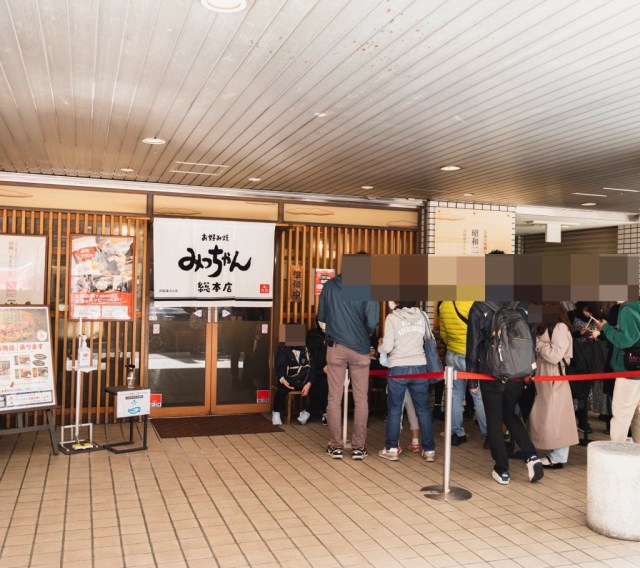
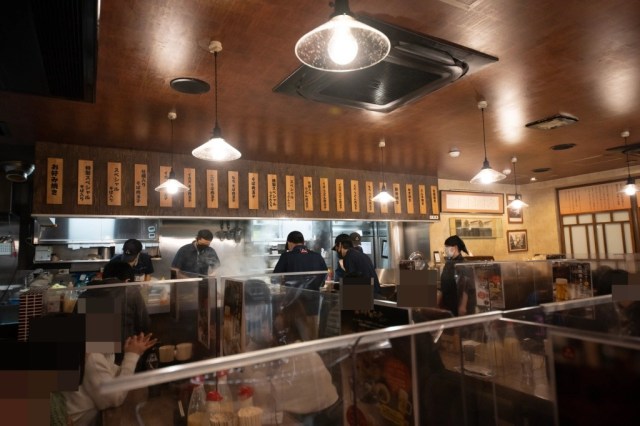
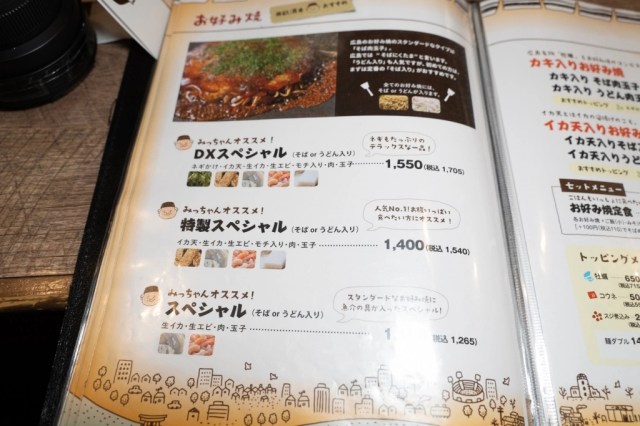
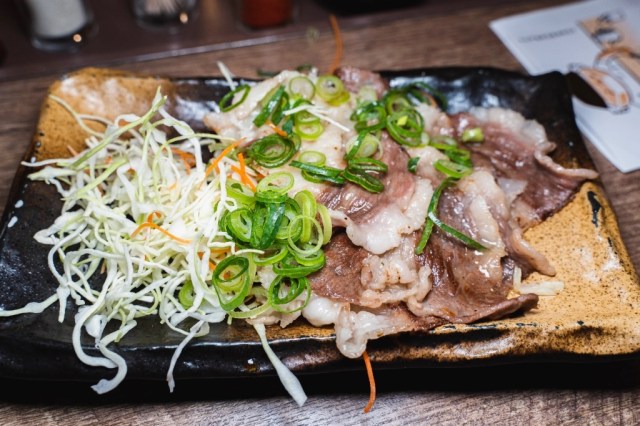
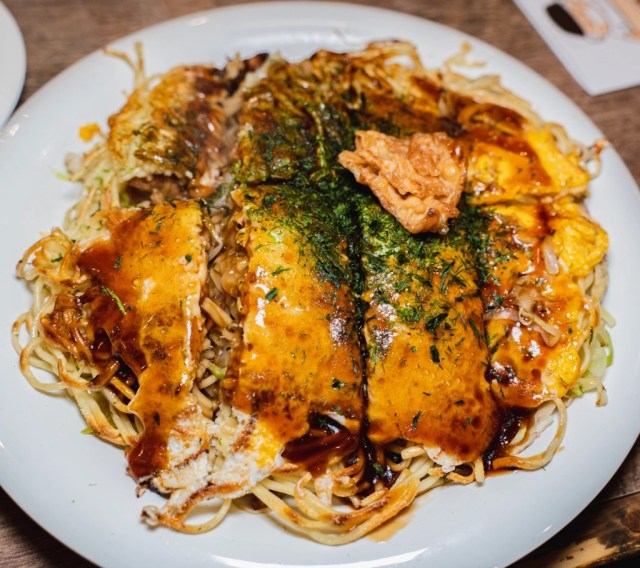
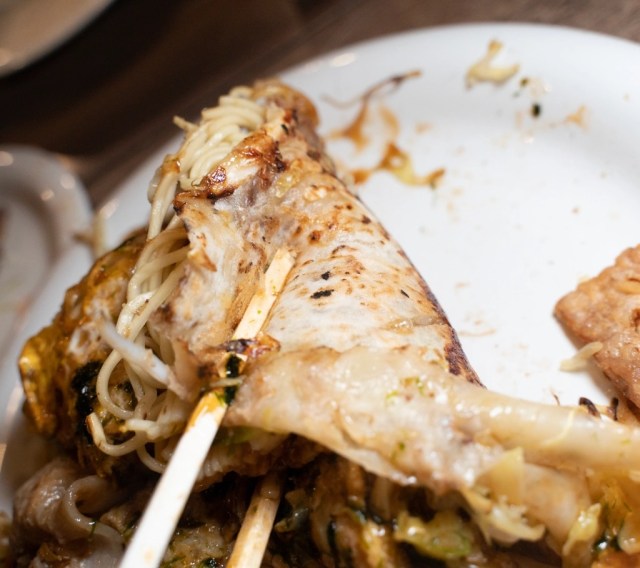
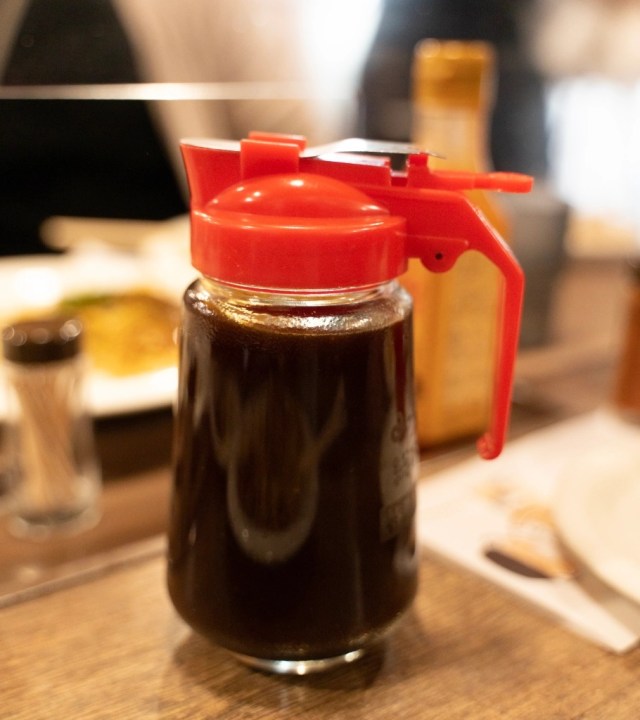
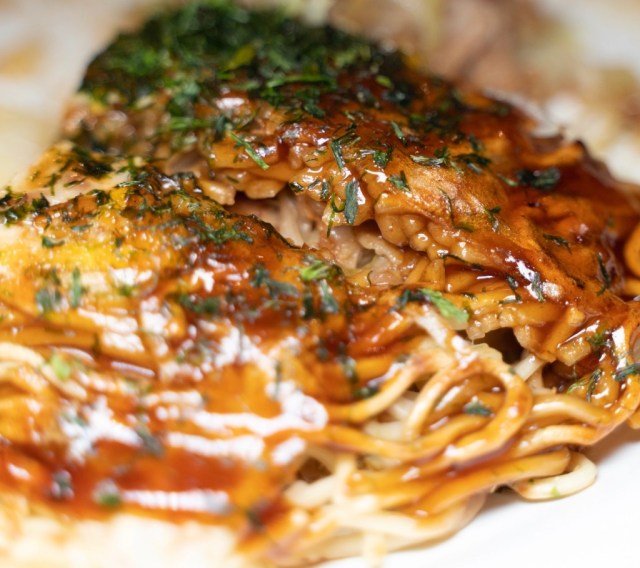
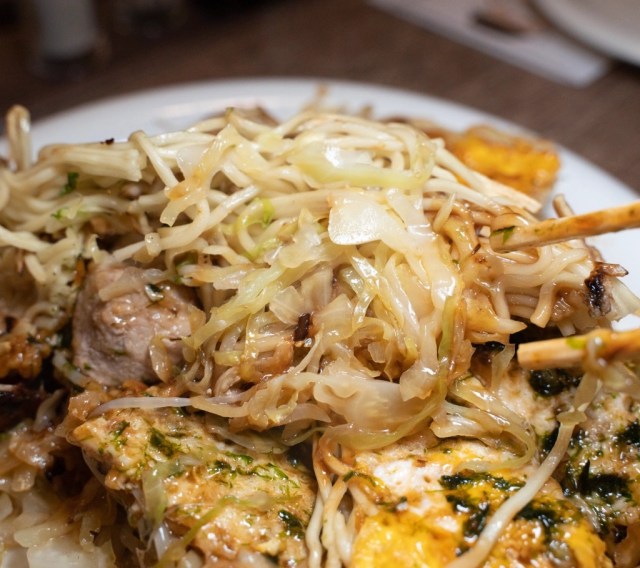
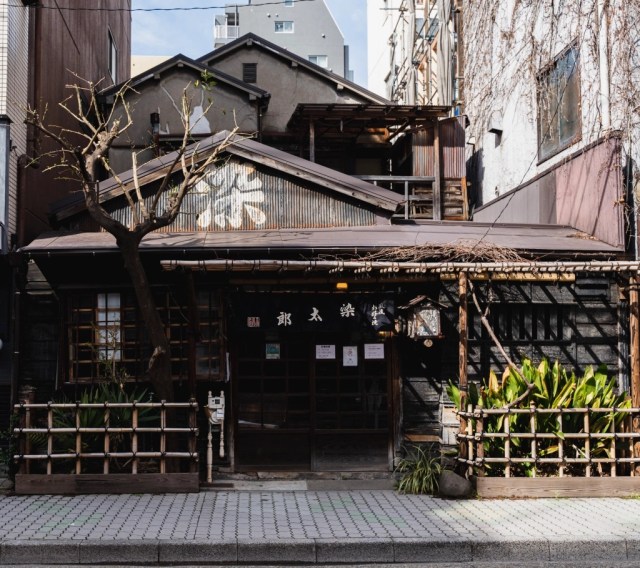
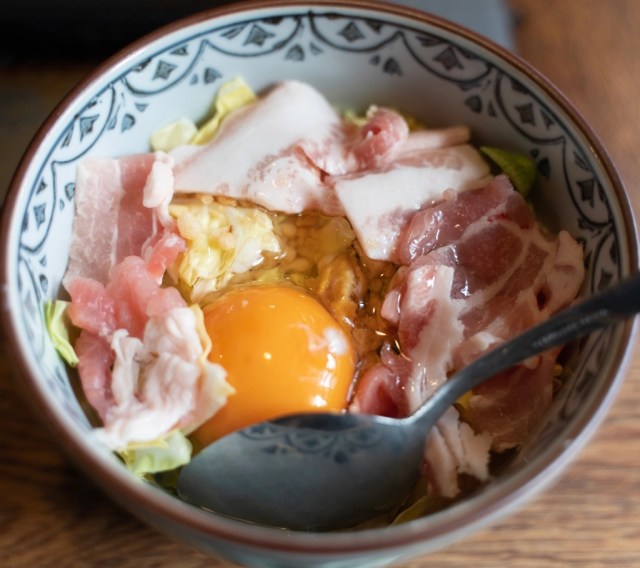
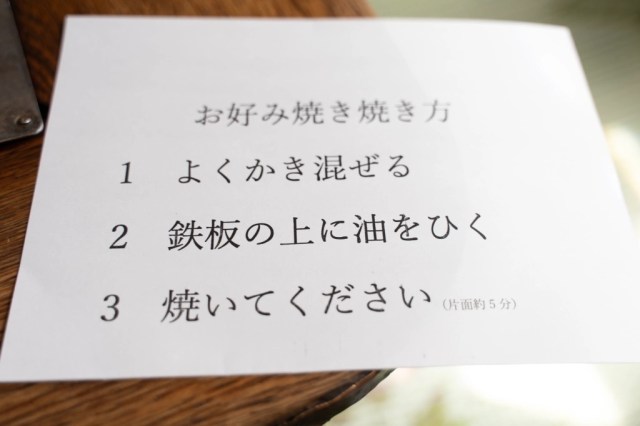
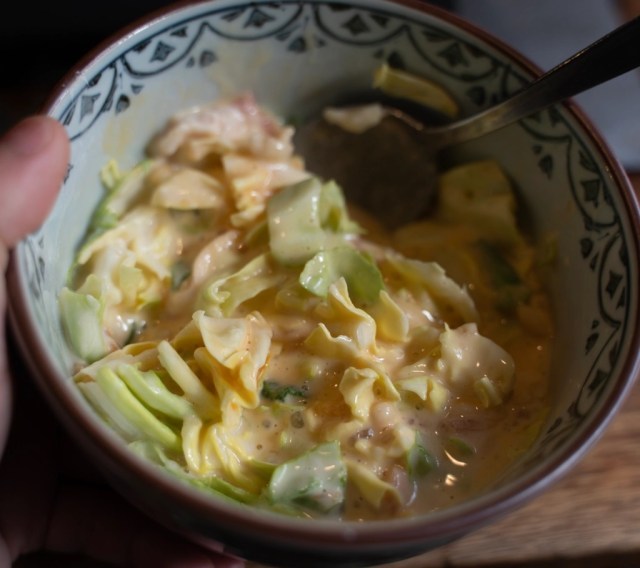
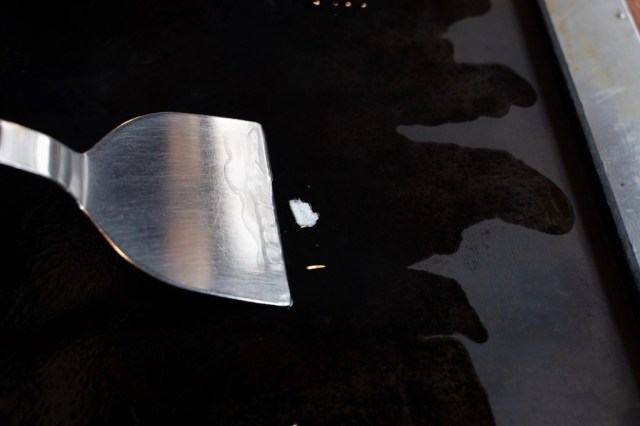

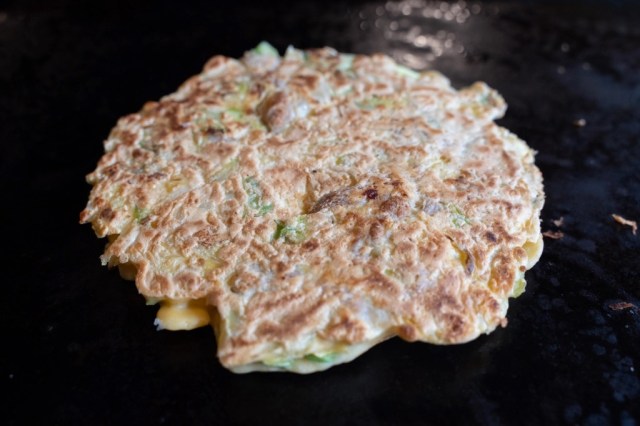
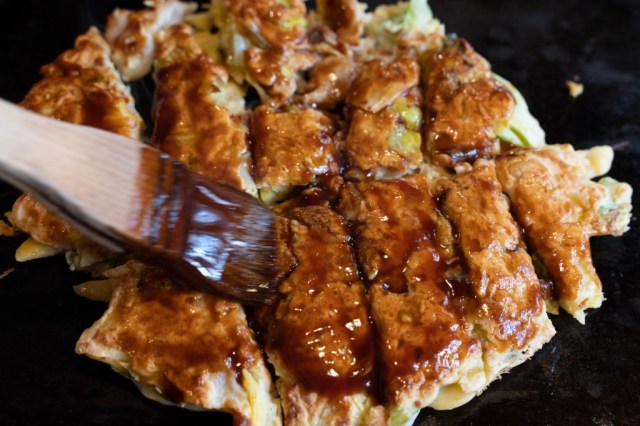
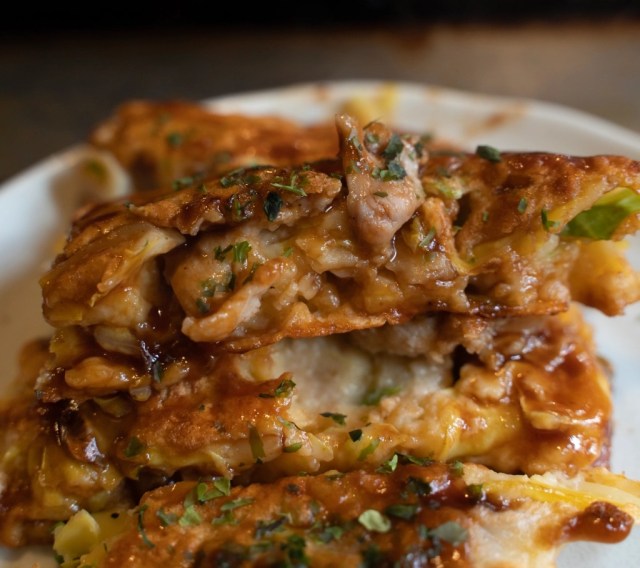
 Japanese politician apologizes to prime minister for calling wife’s cooking “Hiroshima-yaki”
Japanese politician apologizes to prime minister for calling wife’s cooking “Hiroshima-yaki” How to make okonomiyaki at home【SoraKitchen】
How to make okonomiyaki at home【SoraKitchen】 Shakey’s creates Japanese-style-pizza pizza with new Okonomiyaki Pizza
Shakey’s creates Japanese-style-pizza pizza with new Okonomiyaki Pizza Okonomiyaki you can eat with one hand? We try a revolutionary new frozen food【Taste test】
Okonomiyaki you can eat with one hand? We try a revolutionary new frozen food【Taste test】 Microwavable okonomiyaki that you can eat with one hand? Yes, please!
Microwavable okonomiyaki that you can eat with one hand? Yes, please! Foreigner’s request for help in Tokyo makes us sad for the state of society
Foreigner’s request for help in Tokyo makes us sad for the state of society Japanese city loses residents’ personal data, which was on paper being transported on a windy day
Japanese city loses residents’ personal data, which was on paper being transported on a windy day Should you add tartar sauce to Japanese curry rice? CoCo Ichi makes diners an unusual offer
Should you add tartar sauce to Japanese curry rice? CoCo Ichi makes diners an unusual offer Historical figures get manga makeovers from artists of Spy x Family, My Hero Academia and more
Historical figures get manga makeovers from artists of Spy x Family, My Hero Academia and more Akihabara pop-up shop sells goods made by Japanese prison inmates
Akihabara pop-up shop sells goods made by Japanese prison inmates Sandwiches fit for a sumo served up in Osaka【Taste Test】
Sandwiches fit for a sumo served up in Osaka【Taste Test】 Harajuku Station’s beautiful old wooden building is set to return, with a new complex around it
Harajuku Station’s beautiful old wooden building is set to return, with a new complex around it Suntory x Super Mario collaboration creates a clever way to transform into Mario【Videos】
Suntory x Super Mario collaboration creates a clever way to transform into Mario【Videos】 Osaka governor suggests lowering voting age to 0 to curb population decline
Osaka governor suggests lowering voting age to 0 to curb population decline McDonald’s new Happy Meals offer up cute and practical Sanrio lifestyle goods
McDonald’s new Happy Meals offer up cute and practical Sanrio lifestyle goods Japanese ramen restaurants under pressure from new yen banknotes
Japanese ramen restaurants under pressure from new yen banknotes French Fries Bread in Tokyo’s Shibuya becomes a hit on social media
French Fries Bread in Tokyo’s Shibuya becomes a hit on social media Studio Ghibli releases new action figures featuring Nausicaä of the Valley of the Wind characters
Studio Ghibli releases new action figures featuring Nausicaä of the Valley of the Wind characters New private rooms on Tokaido Shinkansen change the way we travel from Tokyo to Kyoto
New private rooms on Tokaido Shinkansen change the way we travel from Tokyo to Kyoto Red light district sushi restaurant in Tokyo shows us just how wrong we were about it
Red light district sushi restaurant in Tokyo shows us just how wrong we were about it Tokyo Tsukiji fish market site to be redeveloped with 50,000-seat stadium, hotel, shopping center
Tokyo Tsukiji fish market site to be redeveloped with 50,000-seat stadium, hotel, shopping center All-you-can-drink Starbucks and amazing views part of Tokyo’s new 170 meter-high sky lounge
All-you-can-drink Starbucks and amazing views part of Tokyo’s new 170 meter-high sky lounge Beautiful Ghibli sealing wax kits let you create accessories and elegant letter decorations【Pics】
Beautiful Ghibli sealing wax kits let you create accessories and elegant letter decorations【Pics】 Studio Ghibli releases Kiki’s Delivery Service chocolate cake pouches in Japan
Studio Ghibli releases Kiki’s Delivery Service chocolate cake pouches in Japan New definition of “Japanese whiskey” goes into effect to prevent fakes from fooling overseas buyers
New definition of “Japanese whiskey” goes into effect to prevent fakes from fooling overseas buyers Our Japanese reporter visits Costco in the U.S., finds super American and very Japanese things
Our Japanese reporter visits Costco in the U.S., finds super American and very Japanese things Studio Ghibli unveils Mother’s Day gift set that captures the love in My Neighbour Totoro
Studio Ghibli unveils Mother’s Day gift set that captures the love in My Neighbour Totoro More foreign tourists than ever before in history visited Japan last month
More foreign tourists than ever before in history visited Japan last month New Pokémon cakes let you eat your way through Pikachu and all the Eevee evolutions
New Pokémon cakes let you eat your way through Pikachu and all the Eevee evolutions Sales of Japan’s most convenient train ticket/shopping payment cards suspended indefinitely
Sales of Japan’s most convenient train ticket/shopping payment cards suspended indefinitely Sold-out Studio Ghibli desktop humidifiers are back so Totoro can help you through the dry season
Sold-out Studio Ghibli desktop humidifiers are back so Totoro can help you through the dry season Japanese government to make first change to romanization spelling rules since the 1950s
Japanese government to make first change to romanization spelling rules since the 1950s Ghibli founders Toshio Suzuki and Hayao Miyazaki contribute to Japanese whisky Totoro label design
Ghibli founders Toshio Suzuki and Hayao Miyazaki contribute to Japanese whisky Totoro label design Doraemon found buried at sea as scene from 1993 anime becomes real life【Photos】
Doraemon found buried at sea as scene from 1993 anime becomes real life【Photos】 Tokyo’s most famous Starbucks is closed
Tokyo’s most famous Starbucks is closed One Piece characters’ nationalities revealed, but fans have mixed opinions
One Piece characters’ nationalities revealed, but fans have mixed opinions We asked a Uniqlo employee what four things we should buy and their suggestions didn’t disappoint
We asked a Uniqlo employee what four things we should buy and their suggestions didn’t disappoint Princesses, fruits, and blacksmiths: Study reveals the 30 most unusual family names in Japan
Princesses, fruits, and blacksmiths: Study reveals the 30 most unusual family names in Japan Be Mr. Sato’s online friend, and he might take you to dinner, like he did with these foreign fans
Be Mr. Sato’s online friend, and he might take you to dinner, like he did with these foreign fans All-Noodle Artisan Marugame udon restaurant operating in Tokyo, only 30 percent pass test
All-Noodle Artisan Marugame udon restaurant operating in Tokyo, only 30 percent pass test Put a unique twist on your oatmeal by turning it into some Japanese comfort food
Put a unique twist on your oatmeal by turning it into some Japanese comfort food Newly opened restaurant in Osaka boasts a new evolution of okonomiyaki
Newly opened restaurant in Osaka boasts a new evolution of okonomiyaki We tried super spicy wasabi ramen and yakisoba that’s rumored to make anyone cry【Taste Test】
We tried super spicy wasabi ramen and yakisoba that’s rumored to make anyone cry【Taste Test】 Rice cooker recipe: How to make a giant cheesy okonomiyaki pancake in a rice cooker
Rice cooker recipe: How to make a giant cheesy okonomiyaki pancake in a rice cooker We try making Nisshin’s Jijimi Korean Pancakes in a cup kit【SoraKitchen】
We try making Nisshin’s Jijimi Korean Pancakes in a cup kit【SoraKitchen】 We learned how to make a calligraphy brush from the masters of Kumanofude in Hiroshima
We learned how to make a calligraphy brush from the masters of Kumanofude in Hiroshima We try Matsuya’s beef stroganoff, only available at select spots, and learn a bit about Matsuya
We try Matsuya’s beef stroganoff, only available at select spots, and learn a bit about Matsuya Trying out First Kitchen’s tsukimi mochi burgers for a taste of Japanese autumn
Trying out First Kitchen’s tsukimi mochi burgers for a taste of Japanese autumn The best and worst Japanese food for foreigners
The best and worst Japanese food for foreigners Hokkaido, Osaka, and Fukuoka: Taste-testing McDonald’s oddly named Adult Regional Teriyaki burgers
Hokkaido, Osaka, and Fukuoka: Taste-testing McDonald’s oddly named Adult Regional Teriyaki burgers How to pick out the best anago eel and other things we learned at the anago processing center
How to pick out the best anago eel and other things we learned at the anago processing center Okonomiyaki taiyaki: Sweet and savoury combination confuses the senses
Okonomiyaki taiyaki: Sweet and savoury combination confuses the senses KFC Taiwan now offering chicken and rice menu based on Japanese okonomiyaki pancakes!
KFC Taiwan now offering chicken and rice menu based on Japanese okonomiyaki pancakes! We fall in love with a bucket of Japanese custard pudding【Taste test】
We fall in love with a bucket of Japanese custard pudding【Taste test】
Leave a Reply